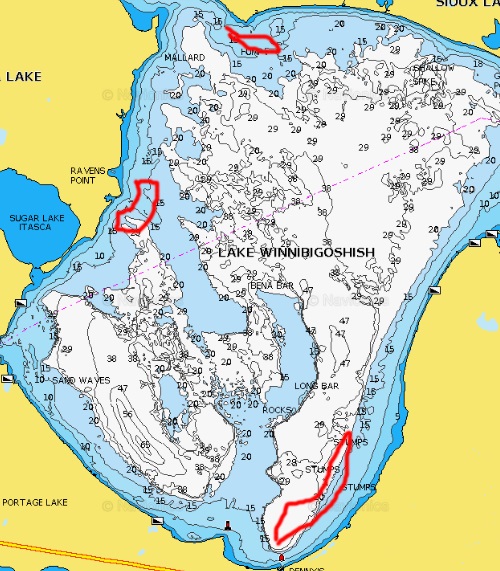
Covering roughly 57,000 surface acres and parts of Cass and Itasca counties, Minnesota’s Lake Winnibigoshish is among the state’s top walleye fishing destinations.
A median depth of 15 feet, with spots that drop to 60-plus feet, as well as vast connecting waters that provide exceptional spawning habitat, combine to form an ideal environment in which walleyes can reproduce, feed, and grow.
Public boat-launching facilities are scattered around the lake, making access from any direction relatively simple; and because Winnibigoshish and its connecting waters are so productive and popular, a special 18- to 23-inch protected slot limit was established to preserve this vital resource. One fish over 23 inches may be included in the daily bag limit.
Team Northland member Randy Erola grew up fishing Big Winnie and surrounding lakes and has operated Remington Fishing Guide Service for 23 years. A jig-and-minnow is his preferred set-up in spring, early summer and fall, while the dog days typically find him trolling ’crawler harnesses along shoreline flats for those hungry walleye.
1. Walleyes fresh off their spawning areas in the spring are looking for minnows and perch in the shallows. Erola advises pitching a 1/8-ounce Gum-Ball Jig or Fire-Ball® Jig (Firetiger and Parrot are his go-to patterns), tipped with a shiner minnow in 5 to 9 feet of water. Try the areas on either side of The Gap from Big Cut Foot Sioux Lake, along the shoreline from Pigeon River to Third River, as well as the areas around Mallard and Ravens points. The shallows from Tamarack Point to the Winni Dam can produce walleyes until about mid-June.
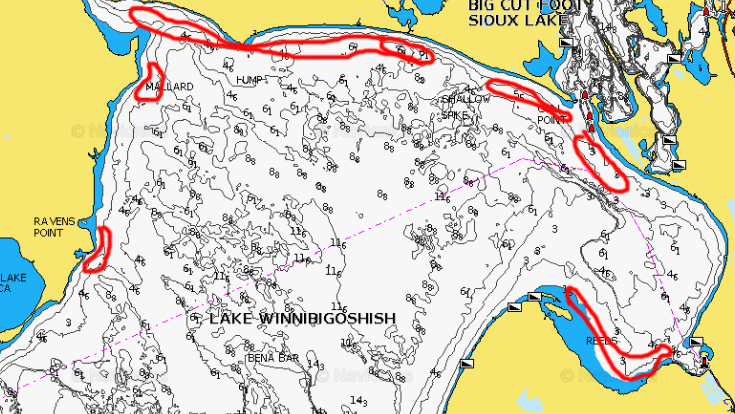
2. A weedline bite becomes more established around the beginning of July. Erola typically trolls nightcrawlers on Northland Rainbow Spinner Harnesses weighted with a ½- to 1-ounce in-line sinker, depending on water depth. Hammered Gold Rainbow or Nickle Rainbow blades are the best options, he says. Try cruising weedlines and breaklines in the 11- to 15-foot range along any shoreline with an incoming wind. Ravens and Mallard points and Muskie Bay can be particularly productive if wind conditions are right.
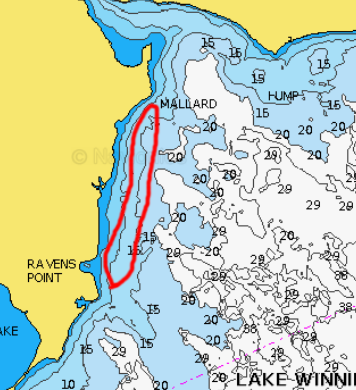
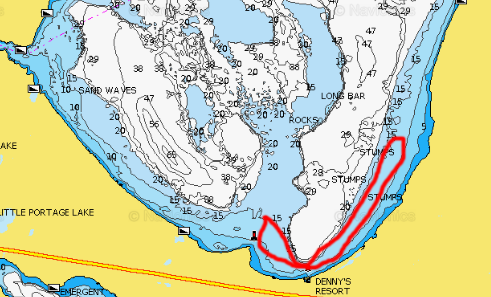
3. Flats along the shoreline, and farther out from the weedline, heat up in the dead of summer—July and August. Again the areas around Ravens Point and from Stoney Point to the Pigeon River, as well as Muskie Bay are good places to start but don’t hesitate to explore similar areas around the lakeshore.
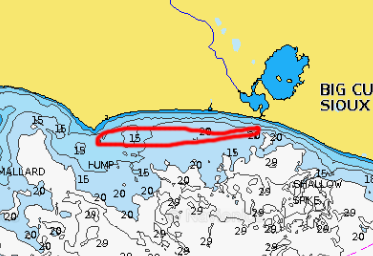
4. Jig-and-minnow combos rule from mid-September to ice-up. Try fishing an Gum-Ball Jig or Fire-Ball® Jig tipped with a redtail chub around Ravens and Stony points, Muskie Bay, or wherever you find a good weedline in the 9- to 10-foot range. Parrot, Firetiger, and Glo Watermelon are Erola’s favorites this time of year.
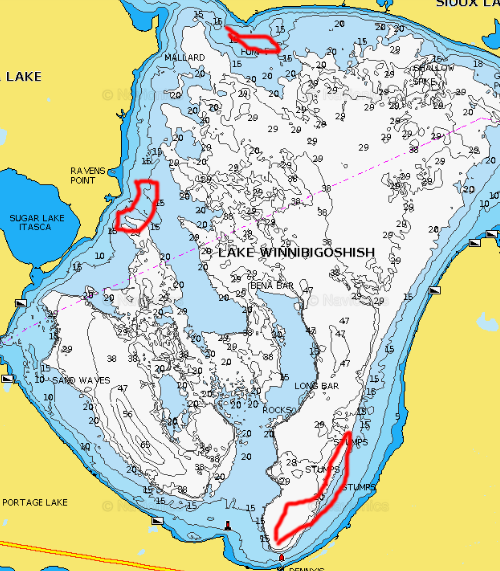
Lake map courtesy of Navionics.

